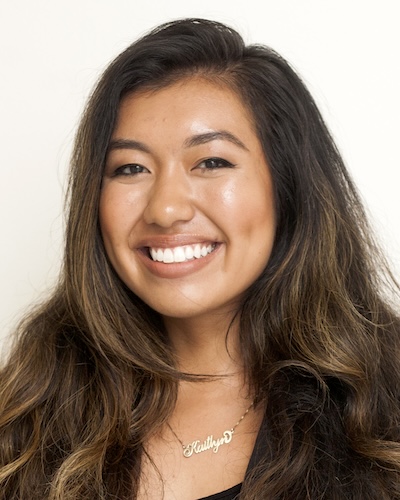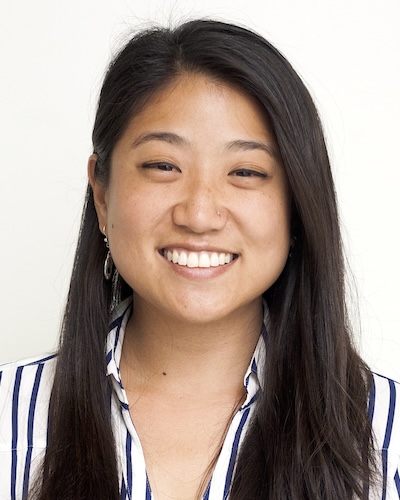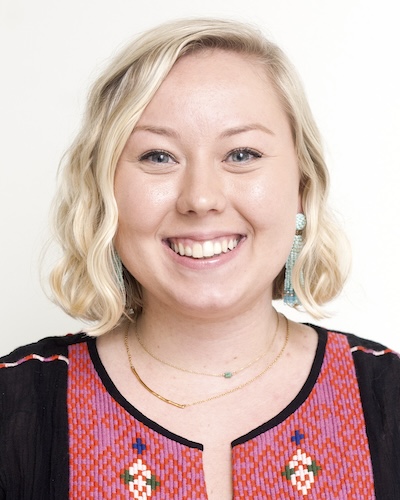Student Blog

Love at First Sight: Finding Occupational Therapy ⟩
August 28, 2017, by Kaitlyn
The most common question I am asked is how my path to pursue occupational therapy began. I have always found it extremely rewarding to hear the narratives of my peers because we all ended up being where we were meant to be: en route to become occupational therapists. Here is my own narrative.
When thinking about what I wanted to do for the rest of my life, I had the following criteria: I wanted to be in health care, I wanted to improve the well-being of people, and I wanted to be able to look back on my life and know that I dedicated my life to serving others in the best way that I could.
For my undergraduate studies, I attended the University of Southern California (my dream school since I was a young girl!) but was very much undeclared and undecided. It was not until I took a class under USC’s Occupational Science minor in my sophomore year that I even knew what occupational therapy was. I like to say that my encounter with OT250: Introduction to Occupational Science and Occupational Therapy is the closest I have ever been to “love at first sight.” I was extremely invested in the material that we were learning in that class. I loved the idea of improving people’s lives based on their own personal goals and seeing each person as a whole instead of in parts. To make things even better, I absolutely admired my professor, Dr. Kate Crowley, who I still keep in contact with to this day.
From that point on, the road to becoming an occupational therapist became clearer and clearer. I began to take more classes under the Occupational Science minor, volunteered and shadowed practicing occupational therapists at numerous hospitals and clinics, and worked at a camp organized by health practitioners for disabled and at-risk children. I learned and saw the power of OT in each experience and enjoyed every minute of it.
Occupational therapy is an amazing profession that I wholeheartedly believe in and I am so excited to be able to share my experiences with you here on this blog. I hope that you enjoy the ride with me and that maybe, just maybe, you’ll fall in love with OT just like I did too.
⋯

OT, you are everything I never knew I always wanted ⟩
August 28, 2017, by Erika
Hello Friends!
Erika here, reporting for my first blog post. Welcome and thanks for reading!
Let me tell you how I discovered OT [cue Drake’s “One Dance”]. Occupational therapy is a second career for me. After graduating undergrad from USC in 2008 in communication, I packed my bags and moved to Brooklyn. Without much focus or intention, I found a job in advertising and worked on accounts that include P&G and Disney. I quickly learned that I had a passion for learning about human behavior. I enjoyed sinking my teeth into consumer data and developing human insights on what motivates people to take action. While learning about why people purchased Swiffers or bought tickets to watch Disney movies was thrilling for the first few years, I knew advertising was merely a stepping stone for whatever was next.
Throughout my seven years in the industry, I would periodically meet up with old friends at SC tailgates or reunions who worked as occupational therapists and I was dumbfounded by the stories they told me about their work. How did one of them work in a hospital with clients with spinal cord injuries, another work with children in a sensory clinic, and yet another work with a client at their home coping with depression? I couldn’t understand the common factor but as I investigated more, I quickly learned that it was actually very simple: meaningful occupation is what unites us as humans. Whether it’s dressing oneself independently to a child being equipped with the means to play safely with peers to being able to play your favorite song on your trumpet again, meaningful activities are what motivates people to take action and live healthier and more fulfilling lives. Talk about human insights! My mind was blown.
With that said, equipped with my love for learning about human behavior, and this time around, with full focus and intention, I’m back in school for my Master’s in OT at USC. I am one year into the program and I can honestly say that I can’t see myself doing anything else. I’ve found a profession that requires me to see and value every client as a distinct and unique individual, challenges me to think creatively, and empowers people to live happier lives in the process. OT, “you are everything I never knew I always wanted” (as quoted from 1997’s romcom hit, “Fools Rush In”).
⋯

Finding (and falling in love with) OT! ⟩
August 24, 2017, by Caroline
I really enjoy studying occupational therapy at USC, and am so excited to share my experiences with you this year. For my first blog post, however, I want to share a little bit about how I got here, starting with how I learned about occupational therapy (OT).
In the eighth grade, I was assigned a big, scary research project, appropriately named the “Eighth Grade Project.” I was to choose any topic, conduct research on it, and write a paper on what I learned. I chose to research Autism. While learning all about Autism, I stumbled upon occupational therapy as a profession that could help individuals with autism. My research described occupational therapy and how it could help individuals with autism with social skills, sensory processing, development, and so much more! My eighth-grade self thought that was super cool, and decided right then and there that’s what I wanted to do in the future. Believe it or not, I never changed my mind!
Through high school and college, I learned more and more about occupational therapy as a profession. In high school, I conducted my “Senior Project” (also quite appropriately named) shadowing an OT at a pediatric clinic, seeing what I had read about for so long. In college, I observed OT in a nursing home and at an outpatient clinic for adults. Throughout my observation experiences, I was amazed by both the breadth and depth of the profession, and knew that OT was for me. I also liked that it was a helping profession, would allow me to work with people, and that every day at work could look different.
I could write a novel about what I love about OT, and I hope you’ll see a lot of that come through in my blogs this year. One thing that stands out to me, though, is that after a year of studying OT, I haven’t yet learned about a practice setting, diagnosis, or subset of OT that I can’t envision myself working in or with. All of the studying, projects, and presentations don’t feel like a chore, because I genuinely enjoy what I’m learning, the professors I’m learning from, and the experiences I’m having in the program. I love learning about OT, and, in particular, I love learning about OT at USC. I’m so happy to finally become the OT that my eighth-grade self dreamed of, and I’m looking forward to sharing my experiences and my love for OT with you over the next year! Thanks for reading!
⋯

My Parents Still Don’t Know What OT Is ⟩
August 24, 2017, by Bryan
I began and completed undergrad without ever hearing of the words Occupational Therapy in combination. Growing up in an immigrant family, my parents always emphasized the importance of pursuing a career with a stable income, regardless of one’s passions. While I cannot thank them enough for working hard to establish a foundation for me to pursue everything I have thus far, I was at war because of my inability to suppress my love for the arts and more creative endeavors.
In order to appease both sides, my daily schedule at UCLA looked like: 8:00 am organic chemistry lecture, 9:30am - 4:00pm internship at movie production company, 5:00pm - 7:00pm physics lecture and discussion, 7:30pm - 8:30pm Improv Comedy class in Westwood, 9:00pm - 11:00pm CareExtenders hospital volunteering. My heart, as well as my schedule, was clearly divided. In the end, I knew I wanted to help others and was told throughout childhood that medicine was the best (and only) way to do so. On the flip-side, I loved storytelling and wanted to become a screenwriter, helping others smile, laugh, and cry as they saw chapters of their own journeys unfold onscreen.
The “creative” side won and I officially declared English as my major and dropped pre-med during my 3rd year. Whether it was trauma from scraping a single point on my physics midterm by writing -9.8 m/s^2 or from unlucky hospital shadowing experiences, I was ready to move away from health care into the romanticized world of marketing and advertising (#madmen).
After a few years working as a copywriter in a number of unique specialties (wedding vendor, mobile app, etc.), the long-suppressed existential questions of purpose began to brew anew. What do I really care about? What do I want to do for the next 40 years of my life? While I totally understand that our careers cannot be a complete (or adequate) representation of our values and passions, I always hoped to enter a vocation I really believed in. For me the pillars of a satisfying career seemed to be: caring for others, building relationships, and financial stability.
In a matter of beautiful fate, during this time my friends all started suggesting pursuing Occupational Therapy. I remember trying to explain this new career path to my parents in broken Korean . . . they still don’t know what it is (though interactions with the Korean international students from Global Initiatives helped a lot!) Honestly, there is so much more to share on how I have been consistently affirmed in my decision to dive into this evolving and exciting profession (more to come in future blogs hopefully), but I am just grateful take part in this opportunity to care for others in creative and meaningful ways.
⋯

OT and Me ⟩
August 24, 2017, by Ali
I want to begin this blog by explaining the story about how I knew occupational therapy was meant for me. I have always been a good student: I turn assignments in on time and start studying for exams weeks ahead. I have always been a good roommate: completing my assigned chores before the chore chart changes. I was a good athlete: never missed practice and worked out on my own. But not until I discovered occupational therapy would I have called myself passionate.
Throughout high school my interests were vast and choosing a college major seemed near impossible. My favorite subjects were art history, health, and biology. My favorite after-school activity was assistant coaching my local Special Olympics swimming and basketball teams. I loved learning about people and engaging with them one on one. When I was applying to colleges, I chose a different major for each university. I had no idea what I wanted to do as a career, but I knew I wanted to help people. I chose USC for its commitment to scholarship and sense of community. I was dying to be a part of the Trojan family the moment my acceptance letter came.
Fast forward to fall of my freshman year at USC, my major was undecided. Each day I would meet new people studying the most interesting things. I found myself attending classes that I was not enrolled in just to learn more about what USC had to offer. One day, I found myself in Kim Morris-Eggleston’s “OT 310: Creativity Workshop,” where I heard the definition of OT for the first time. I was sold.
I fell in love with the idea of a client-centered therapy that focuses on adapting and fixing problems that arise to help clients engage in whatever activity that has meaning to them. Helping people live their happiest and healthiest life, day in and day out, sounded like a dream come true. Occupational therapy is hopeful, creative, and challenging: everything I was looking for in a career. It is not just something I am studying; it is part of who I am.
I applied to the Bachelor’s to Master’s program the spring of my sophomore year and have not looked back since. Being a part of the USC Chan Division of Occupational Therapy for both my undergraduate and graduate course work has shaped how I view the world. I cannot wait to see what the second year of my Master’s degree has in store.
⋯





